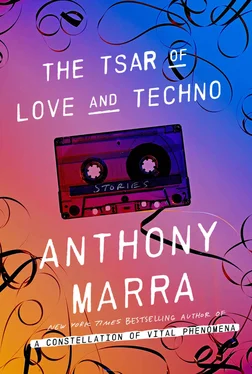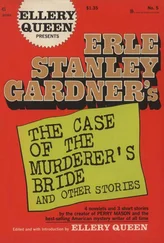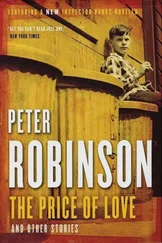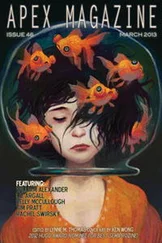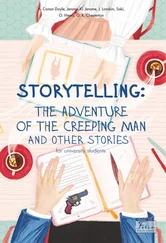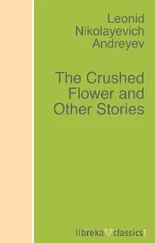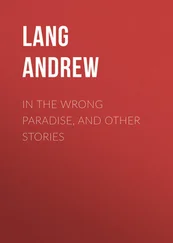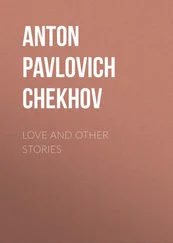Last July I had the opportunity to correct one of my own paintings, a scene of the October Revolution oiled a decade ago, in 1927. Amid an ardent proletariat uprising, I had mistakenly included the figures of Grigory Zinoviev and Lev Kamenev, who couldn’t have been there, not after having been proven perfidious in a recent public trial. I replaced our villains with our hero; Stalin was there, is there, is everywhere. In addition, I noticed other errors — slight skews in perspective, a poorly rendered poplar, a flat and sterile night sky — which, unasked, I took upon myself to correct. I spent two weeks on what should have taken an afternoon. One is so rarely given second chances.
Maxim places a new photograph on the desk.
In it a ballerina floats above the Mariinsky stage. Her left arm ascends into the brilliant wedge of an unseen spotlight. A corona of feathers laurels her black hair. The thick fingers of a silhouetted man corset her waist. He lifts her, throws her, carries or receives her. Photographed from backstage, the first five rows of spectators are visible.
“Who is this?”
Maxim shrugs. The woman is no one. That we have been given her photograph is proof enough that she no longer dances.
But in this photograph, she still has a tutu, tights, a full house, roses in water and champagne on ice in her dressing room. Still has a career. A home. A diploma. A birth certificate.
I know I should be priming the airbrush, bringing it to her pancaked cheek, but she looks so much like my brother’s wife — ridiculous, I know — and to deface her seems a cruelty inflicted on her, on this piece of paper, on the ink in the airbrush, on any hand that will ever hold it, on any eye that will ever see it.
Nothing like this has ever happened to me before, I swear. I wait for the sensation to subside. Maxim must have noticed my expression and he asks if I am unwell.
“Dizzy,” I tell him. “Light-headed.”
“You should eat your lunch, rather than wandering through the tunnels,” he says, and suggests we save the dancer for the next day.
By the time I climb the wooden steps to street level, the sunset is a coppery coin on the horizon. It is late October and the winter closes in. Soon night will wrap around the earth and all Leningrad will become a tunnel I walk through.
Pastel palaces line the Neva, designed by Francesco Bartolomeo Rastrelli or his later imitators; I have forgotten which are authentic and which are counterfeit. Rastrelli died here in 1771, and one can see the later additions of expanded drives, garages, antennas, barred windows, iron doors. Do these architectural changes undermine Rastrelli’s original vision, or would he, as a fellow court artisan, understand that like one’s politics, morality, and convictions, one’s art is subordinate to the mandates of power?
A poster exclaims, WOMEN, DO NOT BE FOOLS, PARTAKE IN SPORT! Another displays a blindfolded man walking off a cliff: ILLITERATES ARE BLIND MEN WHO BELIEVE THEY SEE!
My spectacles fog as I enter my flat. I search for the vestige of furnace heat. A Polish émigré invented the radiator on this very street some eighty years ago; I’m still waiting for one. When I was promoted five years ago, a team of underlings, enough to field a soccer squad, swept through my flat and confiscated every image bearing my face. A precaution, they had explained.
My walls are empty but for a hanging portrait of our vozhd , Stalin. The portrait has been vignetted so Stalin’s face seems to float freely in downy light, like a saint or savior in an old icon. If heaven can only exist on earth, then God can only be a human.
I flip it over. On the back, I have painted one of Henri Rousseau’s jungle cats, a spotted golden glimmer peering through verdant leaves. A sense of belonging seeps from me in a sigh. Now I am at home.
IN MY generation the position of correction artist is a consolation prize for failed painters. I attended the Imperial Academy of Arts for a year, where I made small still lifes of fruit bowls and flower vases, each miniature as realistic as a photograph, before moving on to portraiture, my calling, the most perfect art. The portrait artist must acknowledge human complexity with each brushstroke. The eyes, nose, and mouth that compose a sitter’s face, just like the suffering and joy that compose his soul, are similar to those of ten million others yet still singular to him. This acknowledgment is where art begins. It may also be where mercy begins. If criminals drew the faces of their victims before perpetrating their crimes and judges drew the faces of the guilty before sentencing them, then there would be no faces for executioners to draw.
“We have art in order not to die of the truth,” wrote Nietzsche in a quote I kept pinned to my workbench. Even as a student I knew we die of art as easily as of any instrument of coercion. Of course a handful of true visionaries treated Nietzsche’s words as edict rather than irony, but now they are dead or jailed, and their works are even less likely than mine to grace the walls of the Hermitage. After the Revolution, churches were looted, relics destroyed, priceless works sold abroad for industrial machinery; I joined in, unwillingly at first, destroying icons while I dreamed of creating portraits, even then both a maker and eraser of human faces.
Soon I was approached by the security organs and given a position. Those who can’t succeed, teach. Those who can’t teach, censor the successes of others. Still I could have turned out worse; I’m told the German chancellor is also a failed artist.
Most censoring, of course, is done by publishers. A little cropping, editing, adjusting of margins can rule out many undesirable elements. This has obvious limitations. Stalin’s pitted cheeks, for instance. To fix them you’d have to crop his entire head, a crime for which your own head would soon follow. For such sensitive work, I am brought in. During one bleak four-month stretch, I did nothing but airbrush his cheeks.
During my early days in the department, I wasn’t entrusted with such delicate assignments. For my first year, I combed the shelves of libraries with the most recently expanded edition of Summary List of Books Excluded from Libraries and the Book Trade Network , searching for images of newly disgraced officials. This should be a librarian’s job, of course, but you can’t trust people who read that much.
I found offending images in books, old newspapers, pamphlets, in paintings or as loose photographs, sitting in portrait or standing in crowds. Most could be ripped out, but some censored images needed to remain as a cautionary tale. For these, obliteration by India ink was the answer. A gentle tip of the jar, a few squeezes of the eyedropper, and the disgraced face drowned beneath a glinting black pool.
Only once did I witness the true power of my work. In the reading room of the Leningrad State University library, which I often visited to pore over folios of pre-Revolutionary prints, I saw a young man in a pea jacket search a volume of bound magazines. He flipped halfway through the August 1926 issue to a group portrait of military cadets. The cadets stood in three stern rows, ninety-three faces in total, sixty-two of which I had, one by one, over two years, obliterated.
I still don’t know which among the sixty-two he had been searching for, or if his was among those thirty-one still unblackened faces. His shoulders slumped forward. His hand gripped the table for support. Something broke behind his wide brown eyes. A gasp escaped his lips before he choked the cry with his fist.
With a few ink droplets I had inflicted upon his soul a violence beyond anything my most loving portraits could have ever achieved. For art to be the chisel that breaks the marble inside us, the artist must first become the hammer.
Читать дальше
